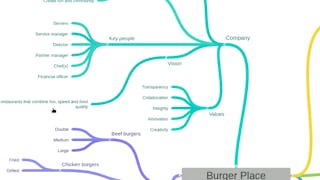- Browse
- Art History
Results for "art history"
 Status: Free TrialFree Trial
Status: Free TrialFree TrialSkills you'll gain: Large Language Modeling, LLM Application, Trend Analysis, Real Time Data, Analytics, OpenAI, Business Marketing, Program Development, Business Strategy, Generative AI, ChatGPT, Technology Roadmaps, Market Trend, Artificial Intelligence and Machine Learning (AI/ML), MarTech, Artificial Neural Networks, Content Marketing, Customer experience improvement
4.5·Rating, 4.5 out of 5 stars13 reviewsBeginner · Course · 1 - 4 Weeks
 Status: Free TrialFree TrialU
Status: Free TrialFree TrialUUniversity of Colorado Boulder
Skills you'll gain: Data Architecture, Web Applications, Software Architecture, Software Engineering, Functional Requirement, Databases, Distributed Computing, Acceptance Testing, Application Deployment, Application Development, Software Testing, Development Testing, System Design and Implementation, Unit Testing, Big Data, Scalability, Restful API, Data Analysis
Build toward a degree
3.5·Rating, 3.5 out of 5 stars19 reviewsAdvanced · Course · 1 - 4 Weeks
 Status: FreeFreeP
Status: FreeFreePParsons School of Design, The New School
Skills you'll gain: Economics, Policy, and Social Studies, Socioeconomics, Economics, Market Dynamics, Social Justice, Economic Development, Labor Relations, Sustainable Development, International Relations, World History, Global Marketing, Behavioral Economics, Innovation, Leadership, Critical Thinking, Communication
4.7·Rating, 4.7 out of 5 stars51 reviewsBeginner · Course · 1 - 3 Months

Skills you'll gain: Business Planning, Product Management, Market Analysis, Process Mapping, Collaborative Software, Business Modeling, Version Control, Business Strategy, Organizational Skills
4.5·Rating, 4.5 out of 5 stars34 reviewsBeginner · Guided Project · Less Than 2 Hours
 Status: FreeFreeD
Status: FreeFreeDDeepLearning.AI
Skills you'll gain: MLOps (Machine Learning Operations), Large Language Modeling, Jupyter, Generative AI, Software Versioning, Data Store, Metadata Management
4.8·Rating, 4.8 out of 5 stars8 reviewsIntermediate · Project · Less Than 2 Hours
 Status: NewNewStatus: Free TrialFree TrialS
Status: NewNewStatus: Free TrialFree TrialSSkillshare
Skills you'll gain: Photo Editing, Video Editing, Adobe Photoshop, Adobe Premiere, Photography, Color Theory, Image Quality, Color Matching, Adobe Creative Cloud, File Management, Editing, Data Import/Export, Cloud Storage
Beginner · Specialization · 3 - 6 Months
 Status: NewNewStatus: Free TrialFree Trial
Status: NewNewStatus: Free TrialFree TrialSkills you'll gain: Post-Production, Storytelling, Video Editing, Timelines, Color Theory, Data Import/Export, Image Quality, Web Content Accessibility Guidelines, Music, Editing
Mixed · Course · 1 - 3 Months
 Status: PreviewPreviewY
Status: PreviewPreviewYYale University
Skills you'll gain: Environment and Resource Management, Sustainable Development, Liberal Arts, Cultural Diversity, Ethical Standards And Conduct, Climate Change Mitigation, Ancient History
4.8·Rating, 4.8 out of 5 stars30 reviewsBeginner · Course · 1 - 3 Months
 Status: Free TrialFree TrialB
Status: Free TrialFree TrialBBoard Infinity
Skills you'll gain: Manufacturing and Production, Industrial Engineering, Workforce Development, Automation, Socioeconomics, Sustainable Technologies, Internet Of Things, Emerging Technologies, Digital Transformation, Artificial Intelligence and Machine Learning (AI/ML)
4.8·Rating, 4.8 out of 5 stars13 reviewsBeginner · Course · 1 - 4 Weeks
 Status: Free TrialFree TrialU
Status: Free TrialFree TrialUUniversity of Colorado Boulder
Skills you'll gain: Object Oriented Design, Unified Modeling Language, Object Oriented Programming (OOP), Test Driven Development (TDD), JUnit, Java, Unit Testing, Software Testing, Software Engineering, Software Design Patterns, Java Programming, Software Design, Systems Analysis, Conceptual Design
Build toward a degree
4·Rating, 4 out of 5 stars9 reviewsIntermediate · Course · 1 - 3 Months
 Status: Free TrialFree TrialU
Status: Free TrialFree TrialUUniversity of Colorado Boulder
Skills you'll gain: Computational Logic, Theoretical Computer Science, System Requirements, Verification And Validation, Mathematical Modeling, Control Systems, Computer Science, Artificial Intelligence
Build toward a degree
3.5·Rating, 3.5 out of 5 stars8 reviewsIntermediate · Course · 1 - 3 Months
 Status: PreviewPreviewS
Status: PreviewPreviewSSAE Institute México
Skills you'll gain: Storytelling, Storyboarding, Content Creation, Media Production, Multimedia, Technical Writing, Digital Communications, Writing, Scripting
4.7·Rating, 4.7 out of 5 stars46 reviewsBeginner · Course · 1 - 4 Weeks
Searches related to art history
In summary, here are 10 of our most popular art history courses
- Understanding Large Language Models in Business: Coursera
- Applications of Software Architecture for Big Data: University of Colorado Boulder
- Economics: Society, Markets, and [In]equality: Parsons School of Design, The New School
- Create a business mind map with Coggle: Coursera
- Evaluating and Debugging Generative AI: DeepLearning.AI
- Adobe Lightroom Essentials: Skillshare
- DaVinci Resolve 19 Masterclass: Audio & Visual Polish: Skillshare
- East Asian Religions & Ecology: Yale University
- Industry 4.0 and its impact on Manufacturing Sector: Board Infinity
- Object-Oriented Analysis and Design: Foundations & Concepts: University of Colorado Boulder










